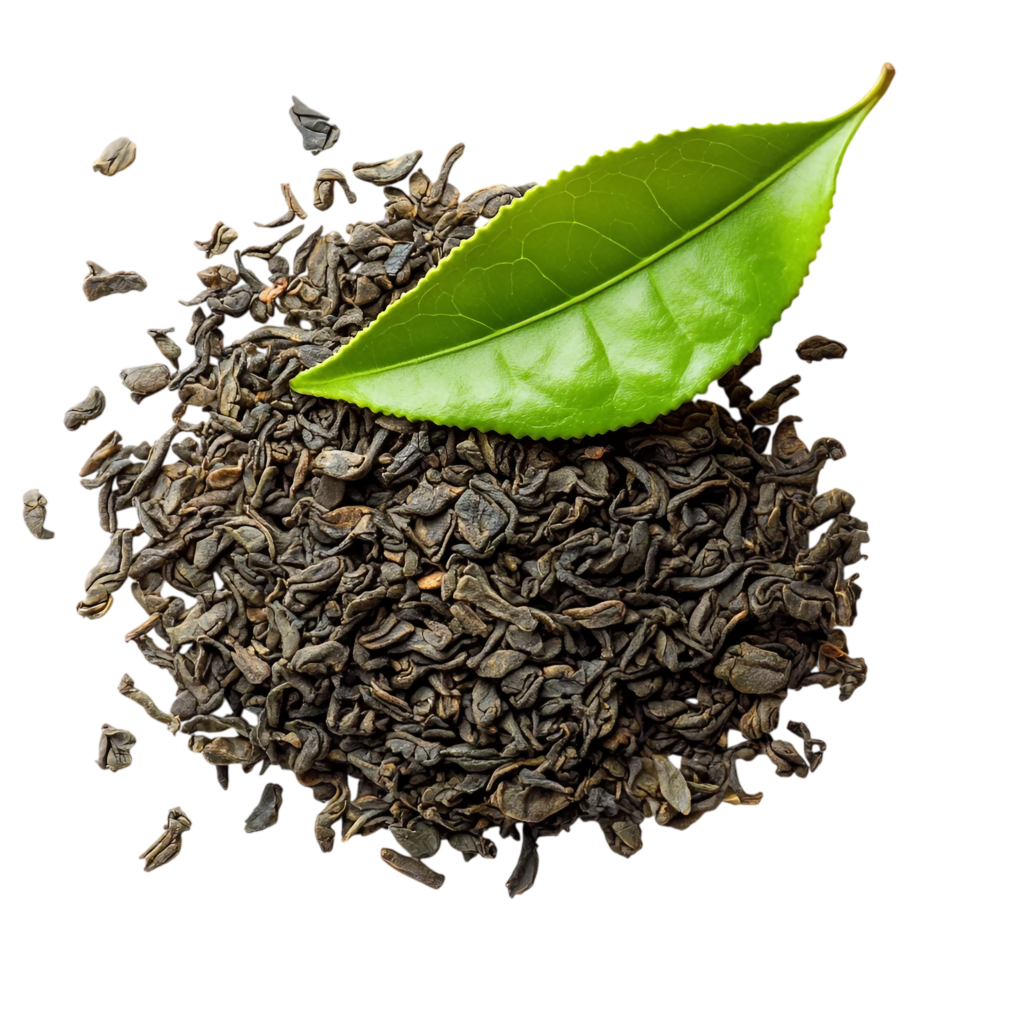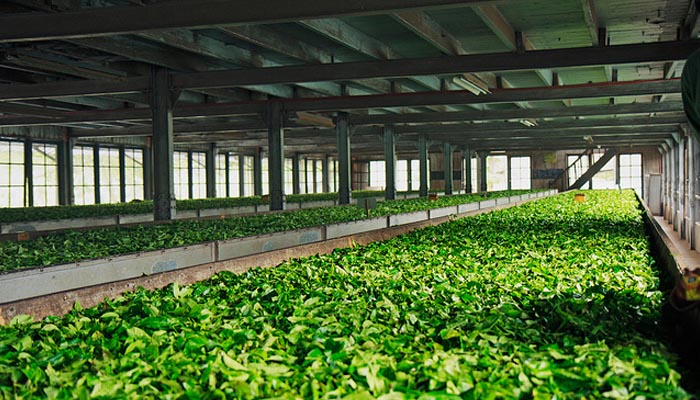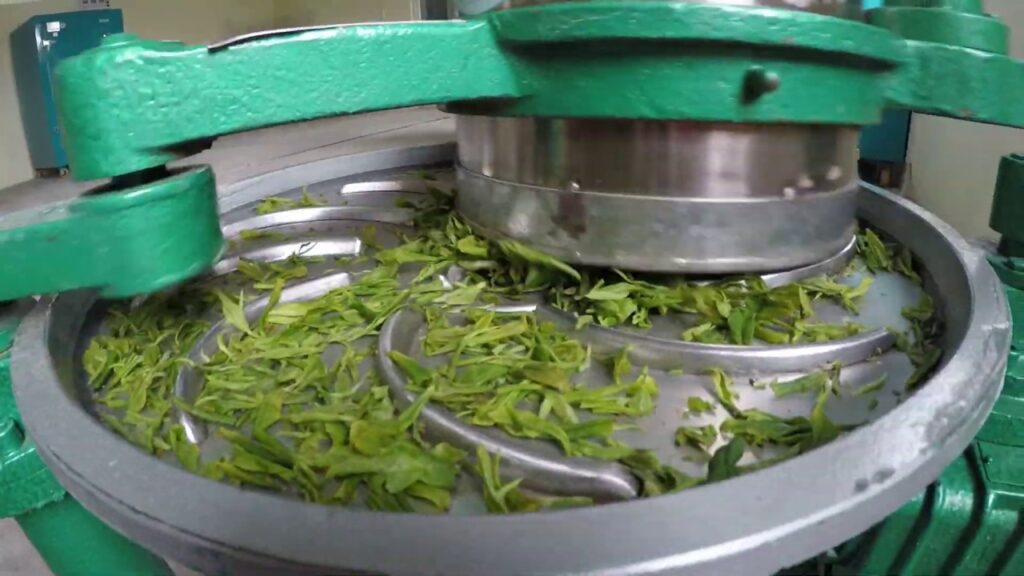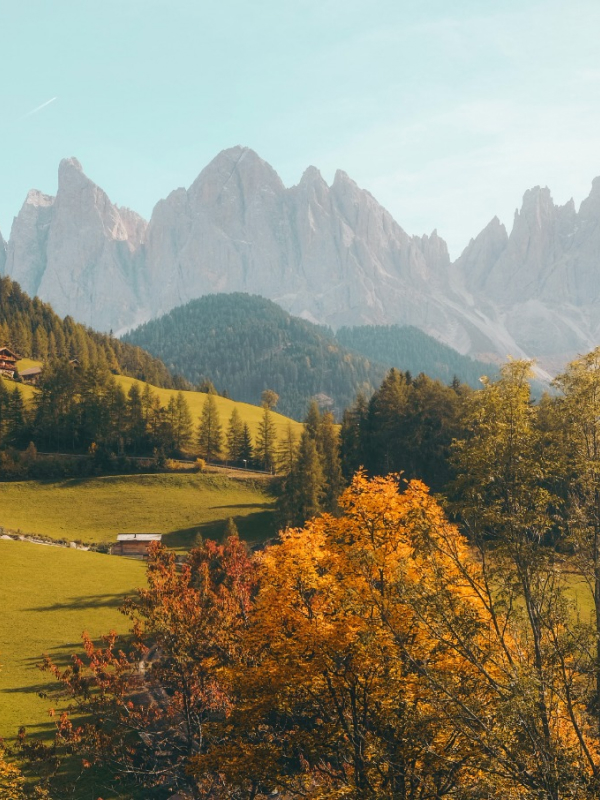Green Tea Process

The Appearance of Green Tea
Green tea is crafted from the tender top two leaves and the bud, prized for their freshness and delicate aroma. Traditional processing emphasizes minimal oxidation to preserve a vivid green hue and a clean, grassy sweetness.
After harvesting, leaves are lightly withered on bamboo trays—briefly sun-warmed or air-dried—to reduce surface moisture. They are then heated (pan-fired or steamed) to halt oxidation and lock in color and nutrients. Next, the leaves are rolled or shaped—into needles, curls, or twists—to refine texture and control how flavors and essential oils are released during steeping. Finally, they are gently dried, yielding leaves that brew a clear, jade-green liquor with bright, nuanced character.
Step 1: Drying
In green tea production, drying is carried out immediately after heating to halt enzyme activity and prevent oxidation. This ensures the tea retains its bright green color, fresh aroma, and delicate taste.
The leaves are constantly stirred or moved to achieve even drying and prevent burning. Traditional methods involve spreading them on bamboo racks or woven straw mats, allowing them to dry under the sun or with gentle warm air.
In some processes, steaming is used, and the steaming time determines the tea’s final style. After mechanical steaming, the leaves are placed in a cooling machine, which carefully blows away remaining moisture—sealing in freshness and preparing them for the next stage of production.


Step 2: Shaping
Shaping gives green tea its distinctive appearance and influences how flavors are released during brewing. In most modern tea-producing regions, this step is done using specialized machinery.
Rolling or shaping not only creates visual appeal but also regulates the release of natural oils, aromas, and flavors when the tea is steeped. Before the final drying, the leaves are partially dried to strengthen their structure, allowing them to withstand the pressure of shaping.
A shaping machine then removes moisture from both the surface and interior of the leaves, ensuring they are ready for the final drying stage while preserving their integrity and character.
Step 3: Final Drying
Final drying is the last stage in green tea production, locking in the tea’s flavor, aroma, and shelf stability. At this point, the shaped leaves are carefully dried to remove any remaining moisture—both from the surface and the inner leaf structure—ensuring the tea stays fresh for long-term storage.
This process is usually carried out by specialized drying machines that apply controlled heat and airflow.
By the end of this step, the leaves have reached their distinctive form, whether curly, twisted, pointed, or round, and are ready for sorting, grading, and packaging. This careful finish ensures the tea delivers its pure, vibrant character with every steep.


Step 4: Post-Processing
In the post-processing stage, green tea is graded, refined, and prepared for market. A specialized machine sorts the leaves by particle size, shape, and cleanliness, using mechanical sieves with precision mesh sizes, along with cutting devices to achieve the desired leaf style.
Once grading is complete, the tea undergoes a final, gentle drying to enhance its aroma and lock in flavor. Depending on customer requirements, teas may then be blended to achieve a specific taste profile or aroma.
The finished product is then carefully packed to protect freshness and quality before being shipped to retail shops—ready for tea lovers to enjoy around the world.
